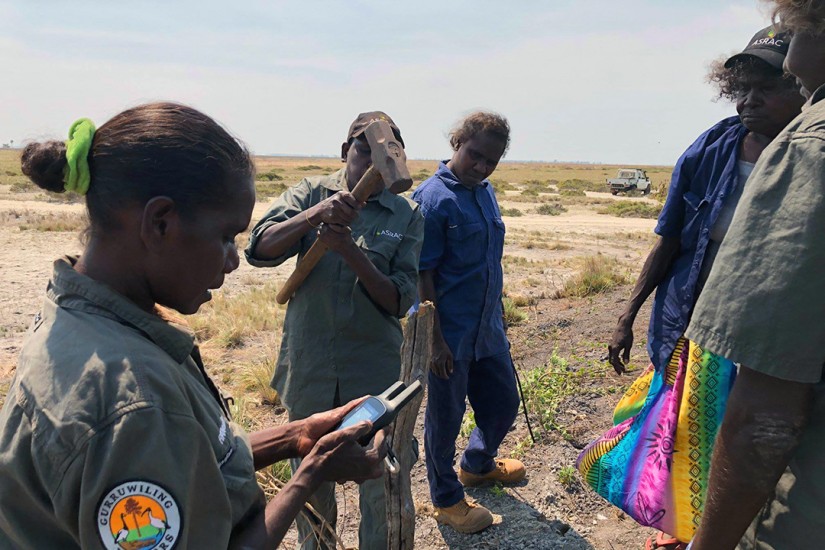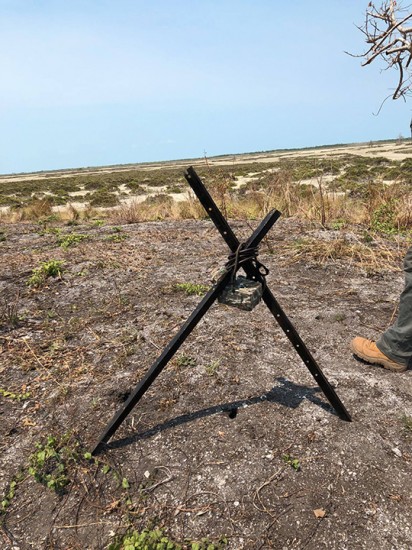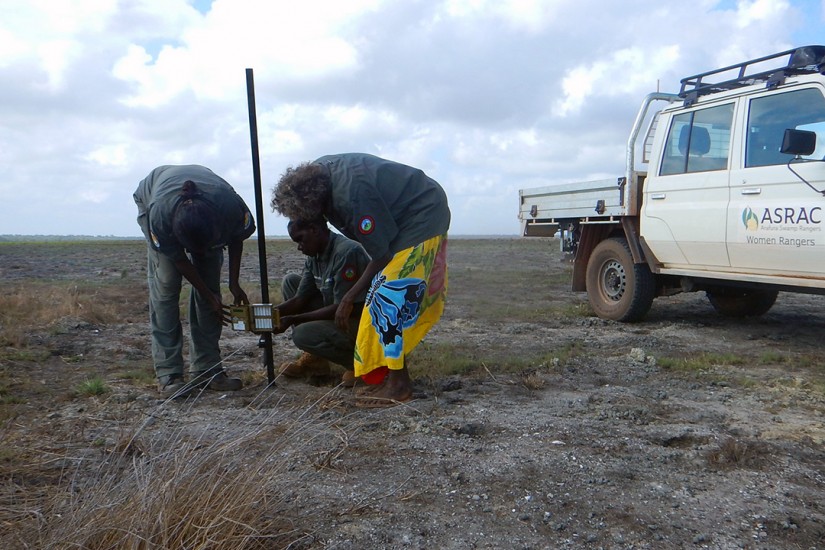November 10, 2018
The water mouse, or false water rat, has been so rarely sighted, Territory authorities struggle to classify it as either vulnerable or threatened.
The Arafura Swamp women rangers are hoping their new research project will find the tiny creature and contribute much-needed data about its place in the landscape.
Women ranger coordinator Katie Degnian said they’re looking for a thriving population.
“We know they’re nocturnal and prey on crabs and molluscs, but little else is known,” Ms Degnian said.
“Expert mammalogists have been helpful in providing advice, but habitat and nest types vary in different populations and there’s no information on what their nests might look like in our area.
“We want to conduct long-term studies, for example on the population density and size, but we need to confirm they’re living here first.”
The women rangers bring their skills and intimate knowledge of the country in identifying burrows, tracks and scats.
Ranger May Marragnal said the group is also using western science to set motion cameras over suspected burrows and upload the data into the computer.
“So far our cameras traps have snapped pictures of Lörpu, the white cockatoo, and Bikiŋ, a small crab,” Ms Marragnal said.
The water mouse has been sighted in six places in the Northern Territory’s recorded history, with the most recent record from the Glyde river floodplain in 1999.
It was found on coastal saltmarsh with predominant vegetation of samphire shrubs and Sporobolus virginicus, a species of grass.
“In addition to looking at water mouse habitat and populations, we are also interested in potential threats to the water mouse,” Ms Degnian added.
“We believe one of the main threats to the species is feral cats.
“Feral animals like buffalo and pigs and do incredible damage to habitat, but feral cats target small mammals.”
Beyond the Territory, the species has been found in small numbers along the coast and islands in south-eastern Queensland and in New Guinea.
The rangers’ research work is long term, but it will briefly halt over the summer months as they are forced to remove the cameras during the wet season when the targeted habitat floods.


